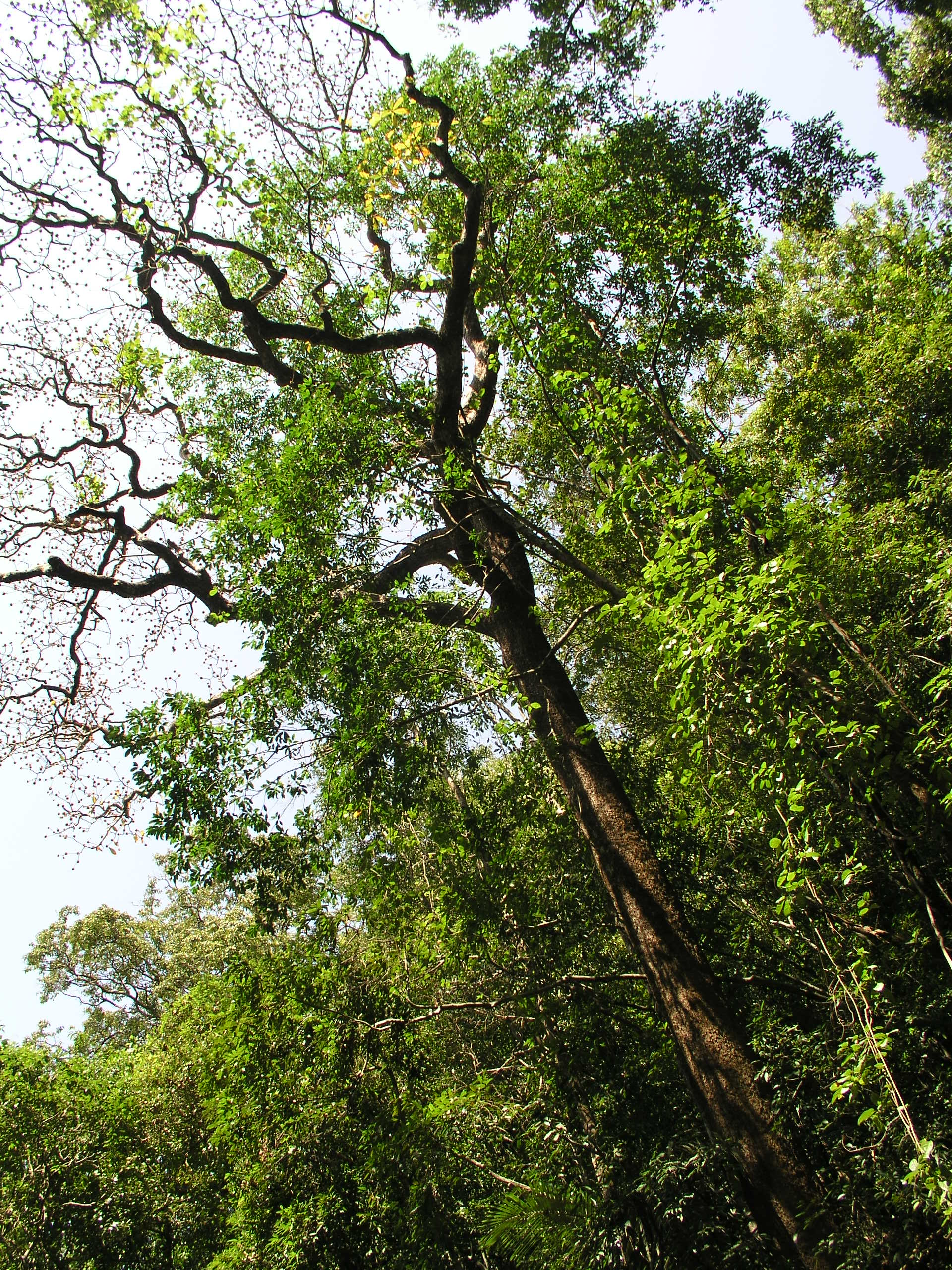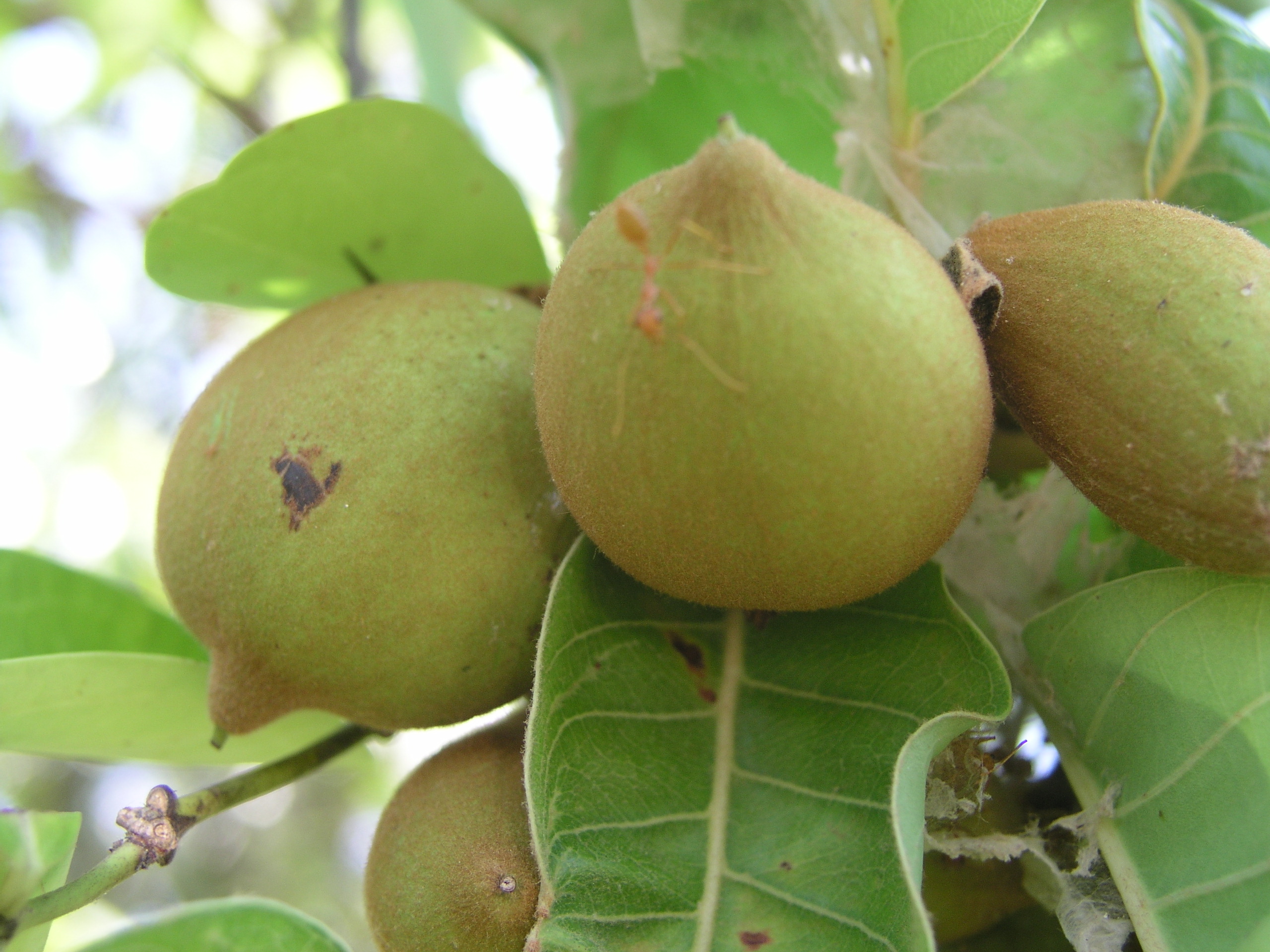|
Madhuca bourdillonii (Gamble) Lam. |
|
Bourdillon [7], the discoverer of this species in Travancore
during 1894-95 described it as a “rare tree of medium
size occurring in the Ariankavu and Shenduruny valleys, but
not seen elsewhere”. Gamble [13], quoting Bourdillon, also
described it in the Flora of the Presidency of Madras (vol.2).
The Red Data Book of Indian Plants considered its status as
“possibly extinct”, since the species was not collected after
Bourdillon’s observation. The book states [9], “Indiscriminate
and steady destruction of its natural habitats, compounded
by selective felling of Madhuca trees in the past for
their purported all round value, accounts for the present day
state of scarcity in the Western Ghats region”. Sasidharan
and Sivarajan [10] found this species in the forests of Thrissur
district (10.66° N, 76.25° E), to the north of the type localities.
Later, it was also found in its type localities namely
Arainkavu and Shenduruny valley and was reported [11] as
“rare”.


OCCURRENCE OF M. BOURDILLONII IN UTTARA KANNADA
Notably all the findings of the species hitherto were towards
the south of Palghat Gap, until we came across a rare
population in Ankola taluk (14.7° N), of Uttara Kannada
district, in the central Western Ghats. Our find extends the
northern limit of the species by about 500 km; but more significantly,
this is the first report of the species from north of
the Palghat Gap. Fig. (2) depicts these locations along with
the earlier sightings. There were only 13 trees of this critically
endangered species dispersed within a stretch of evergreen
forests. Three of them exceeded 30 m in height and
were about 2 m in girth while others were much smaller.
These trees occurred in a relic forest characterised by a
Myristica swamp and endemic trees such as Aglaia anamallayana,
Dipterocarpus indicus, Garcinia talbotii, Holigarna
spp., Gymnacranthera canarica, Knema attenuata, Myristica
malabarica, etc. Incidentally, this site is also a northward
extension for D. indicus by about 30 km, from the previous
report [14].
DESCRIPTION OF M. BOURDILLONII
Madhuca bourdillonii is a medium to large tree exceeding
30 m height at maturity (Fig. 3a). Though described as
an evergreen [9], it has a brief period of leaf-fall, which is
not strictly season bound. Flowering is simultaneous with
leaf-fall and new flush that follows is mingled with late
blooming flowers and early fruits. The trees have grayish
brown, longitudinally fissured and flaky bark with a pinkish
interior (Fig. 3b). The plant parts have milky latex like other
species of Madhuca. Young shoots, including young leaves,
are densely covered with brownish-orange, wooly hairs. In
the mature leaves the undersurface of veins retains the hairs.
In other related species like M. longifolia var. longifolia and
M. longifolia var. latifolia and M. neriifolia mature leaves
are not hairy. The leaves are simple (Fig. 3a) reaching dimensions
of 20-32 x 6-10 cm and crowded towards the tips
of branchlets. They have conical base and bluntly acute to
narrowing tips. In having 20-25 pairs of lateral nerves M.
bourdillonii stands apart from its close associates M. longifolia var. longifolia (10-12 pairs) and M. longifolia var. latifolia (10-14 pairs). Flowers appear in dense clusters (Fig. 3c)
from the axils of fallen leaves or of older leaves that are
about to fall. When the tree is in full bloom, clusters of
young leaves appear from the tips of branchlets. The stalks
of flowers, 1.5-2 cm long, are also covered with dense hairs.
Sepals are 4, ovate and hairy outside. Corolla consists of 12
united petals. Stamens are often twice the number of petals,
in two whorls. The anther is tipped with a narrow outgrowth.
Genus Madhuca produces berries (Fig. 3d) with one to few
seeds. Globose fruit is a key distinguishing character of M.
bourdillonii. Madhuca longifolia var. latifolia has globose
fruit, with oblique apex [15] and M. longifolia var. longifolia has ovoid fruit. Both these varieties have 1 or 2 seeds
whereas M. bourdillonii has 2-3 seeds (Fig. 3e). Table 1
compares the various Madhuca spp. of South India.
 Fig. (3). a) Madhuca bourdillonii in flush; b) An old tree of M. bourdillonii – showing fissured and flaky bark; c) flower; d) fruit and e)
seeds.
Fig. (3). a) Madhuca bourdillonii in flush; b) An old tree of M. bourdillonii – showing fissured and flaky bark; c) flower; d) fruit and e)
seeds. 
HOME